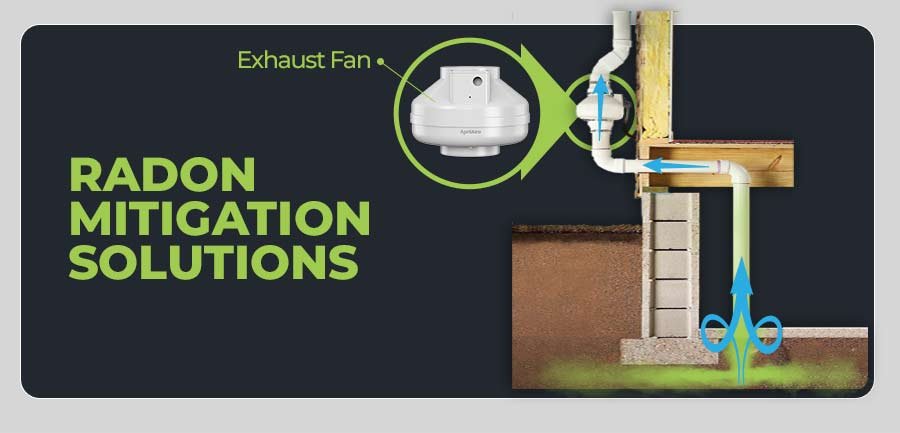Radon Causes Cancer:
Lung Cancer: The most significant health risk associated with radon exposure is lung cancer. Radon is a radioactive gas that, when inhaled, can damage the cells lining the lungs. This damage increases the risk of lung cancer over time.
Radioactive Decay: Radon gas decays into radioactive particles that can get trapped in the lungs when breathed in.
Cell Damage: These particles release small bursts of energy, damaging lung tissue and potentially leading to cancer.
Cumulative Risk: The risk increases with higher radon levels and longer exposure times.
Smokers at Higher Risk: Smokers exposed to radon have a much higher risk of developing lung cancer compared to non-smokers exposed to radon.
Respiratory Issues:
Chronic Exposure: Prolonged exposure to radon can lead to respiratory problems, such as chronic cough, bronchitis, and other lung infections.
Symptoms: Although less common, some individuals may experience symptoms like wheezing, shortness of breath, or other respiratory issues as a result of long-term exposure.
Increased Risk for Children:
Vulnerability: Children are more sensitive to radon exposure due to their developing lungs and faster breathing rates.
Long-Term Impact: Early-life exposure can increase the likelihood of developing lung cancer later in life.
No Safe Levels:
Continuous Risk: Any exposure to radon carries some risk. While the EPA action level is set at 4 picocuries per liter (pCi/L), lower levels still pose a health risk, and it's recommended to reduce radon levels as much as possible.

Radon is colorless, odorless, and tasteless, making it undetectable without proper testing. By opting for a professional radon test, you can ensure a thorough, accurate, and reliable assessment of your home's radon levels, leading to effective mitigation and a safer living environment.
Key Points:
Latency Period: The effects of radon exposure can take many years to manifest, often 5 to 25 years or more after exposure.
Preventive Action: Regular testing and mitigation in homes, schools, and workplaces can significantly reduce radon-related health risks.
Radon Levels in Your County:
Click to Enlarge: The percentage of households tested here in Utah at or above 2.7 pCi/L the radon level threshold to inastall a mitigation system based pon the recommendations from the WHO, World Health. Organization



Sub-Slab Depressurization (SSD):
Active Soil Depressurization: This is the most common and effective method for reducing radon levels. It involves installing a vent pipe system and fan that pulls radon from beneath the house and vents it outside.
Installation: A PVC pipe is inserted through the foundation slab into the soil beneath the home. The pipe is connected to a fan, which creates a vacuum that pulls radon gas from the soil and expels it through a vent above the roofline.
Continuous Operation: The fan runs continuously to ensure radon gas is consistently vented away from the home.
Heat Recovery Ventilators (HRVs) and Energy Recovery Ventilators (ERVs):
Ventilation Solutions: HRVs and ERVs improve air circulation by exchanging indoor and outdoor air, which can help reduce radon levels by diluting indoor air.
Energy Efficiency: These systems also recover heat from the outgoing air, maintaining energy efficiency while improving air quality.
Steps for Effective Radon Mitigation:
Initial Professional Testing: Conduct a professional radon test to determine the level of radon in your home.
Follow-Up Testing: After mitigation, retest to ensure the system is effectively reducing radon levels.
Choosing the Right System: Work with a certified radon mitigation professional to choose the best system for your home’s specific needs and construction.
Regular Maintenance: Regularly inspect and maintain the mitigation system to ensure it continues to operate effectively.
Fan Replacement: Replace the mitigation fan as needed, typically every 5-10 years.
Our air quality experts will show you exactly what contaminants are in your home and teach you how to protect your family.
Understand the levels of mold, dander, pollen, dust mites, and bacteria.
Discover how ,uch and what kinds of PMs are affecting your family.
Normaly costs over $150.00, now free!
Identify and take proactive steps to ensure a healthier indoor environment.
Understanding the carbon monoxide levels in your house is the first step to protect your family's health and wellness.
Click the button below and complete our quick survey to get started!
Click to Schedule-Free Air Quality Test-